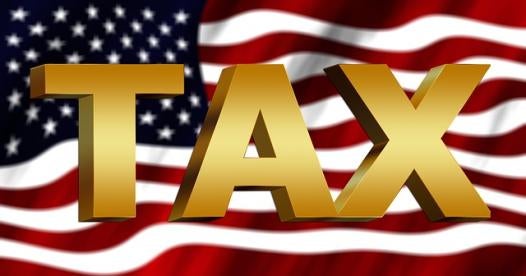In order to understand the context in which the current tax reform bill, H.R. 1, is being considered, it is important to know the meaning of two bits of Washington jargon: “budget reconciliation” and the “Byrd rule.” Though somewhat arcane, these terms have a substantial impact both on the likelihood of enactment of tax reform legislation and on the contents of, and revisions to, such legislation.
Under the Congressional Budget Act of 1974, budget reconciliation is a two-step process. Under the first step, reconciliation instructions are included in the annual budget resolution. The federal fiscal year runs from October 1 through September 30. Congress passes a budget resolution specifying spending and revenue levels for that year, and, in the case of tax revenues, containing instructions to the two tax-writing committees, the House Ways and Means Committee and the Senate Finance Committee, as to the changes in law that they are to propose in order to achieve the specified tax revenue levels.
For the federal fiscal year that began on October 1, 2016, the budget resolution was approved by the Senate on October 19 (by a vote of 51-49, with all Democrats plus Senator Rand Paul voting no), and by the House on October 26 (by a vote of 216-212, with all Democrats plus 20 Republicans voting no). The budget resolution instructs the two tax-writing committees to make tax law changes that increase the federal deficit by not more than $1.5 trillion during the ten-year period beginning with fiscal 2018, that is, fiscal 2018 through fiscal 2027.
Under the second step of the reconciliation process, an omnibus budget reconciliation bill is considered in the House and Senate under expedited procedures. These procedures have much greater impact in the Senate than in the House, which generally operates under similar procedures. But for a reconciliation bill in the Senate, a simple majority is sufficient for approval, and debate time is limited to 20 hours. Normally, of course, the Senate permits extended debate and generally requires 60 votes for approval.
However, in considering budget reconciliation bills, the Senate must also comply with the so-called Byrd rule, which started out as a Senate rule in 1985, named after the late Senator Robert Byrd, who was Senate minority leader at the time, but which was codified as part of the Congressional Budget Act in 1990. The purpose of the Byrd rule is to preclude the Senate from engaging in general lawmaking through the budget reconciliation process. The rule provides that budget reconciliation bills may not include extraneous provisions, and the part of the definition of “extraneous provisions” that is most important in the context of the current tax bill is any provision that would add to the federal deficit in any fiscal year after the fiscal years covered by the reconciliation bill (in Washington jargon, the “out-years”). So, in the context of this tax bill, the Byrd rule prohibits the inclusion of any law change that would increase the federal deficit in fiscal 2028 or any later fiscal year. By all accounts, the tax bill unveiled by House Republicans on November 2 complies with the $1.5 trillion instructions contained in the budget resolution, but does not comply with the out-year prohibitions contained in the Byrd rule.
Finally, a note about who makes these determinations and how this provision is enforced. By custom and tradition, tax estimates are made by the staff of the Joint Committee on Taxation, and the determination of whether a particular provision complies with the Byrd rule is made by the Senate parliamentarian, who serves at the pleasure of the Senate majority leader. As a statutory matter, the person entitled to make these determinations is the presiding officer of the Senate. Any senator may raise a point of order if he or she believes there has been a rule violation, and the presiding officer‘s determination can then be appealed to the full Senate, but the determination can only be overturned by a 3/5 vote. Under the U. S. Constitution, the presiding officer of the senate is the Vice President. In his absence the senators elect a president pro tem, typically the most senior member of the majority party, and in practice junior senators of the majority party are designated for the purpose. But in the case of an important bill like this one, it can be expected that the vice president will be serving as the presiding officer at the time of the vote.




 />i
/>i

